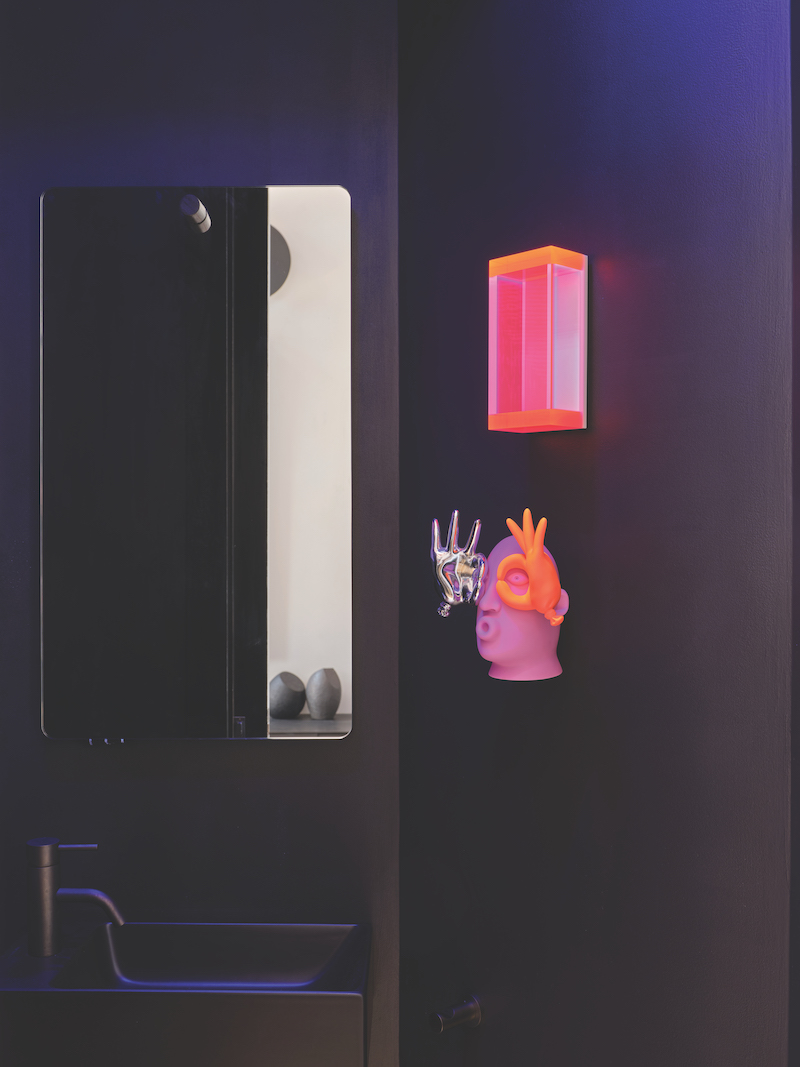Displaying art in your home is not always just a matter of frame and hang. Sometimes artworks lend themselves to particular spaces, larger works may look better on their own, smaller works may look better in groups, you might choose to hang objects or textiles. Or you may choose to really flex those creative muscles and break all the rules.
At his Auckland home, marketing consultant Daniel Varcoe has an ever-evolving art collection that he is constantly rearranging. Sometimes the medium of the artwork will inspire its hang, such as a large work by Melbourne street artist Rone that was painted on a grid of reclaimed windows and hung directly beside a large window to catch the light. Nearby, a Polar light by Ross Gardam adds to the light, casting shadows on white walls via a nearby Dion Horstmans sculpture. “When you gently light the artwork, the shadows come into play,” says Varcoe. “A lot of it is set up with light and mood.”
But probably the most unusual hang in his home is two works in the bathroom. The idea to hang these two pieces here was sparked by the Perspex artwork by German light artist Regine Schumann that needs a black light to be visible. “All the rest of the walls in the apartment are white, so we decided to go with something different in the powder room,” says Varcoe. “And, because it’s a full renovation, we could properly wire in a black light into the ceiling.” A serendipitous discovery was that a sculptural work by Mark Whalen, with a cartoonish face in neon bright colours, also reacted positively to the black light. “I thought, ‘this will work’,” he says. “And it did.”
At the Melbourne home of architect, poet and artist Billy Kavellaris, it’s the large size of many of the artworks that really makes an impression. Probably most spectacular is a huge mural on the entirety of the home’s glass facade by Spanish duo PichiAvo. Another work by Kavellaris himself, Red Column, is a large-scale traditional column that appears to be embedded in the walls of this contemporary house, slightly askew over two storeys. Also impressive in scale are two painted steel giraffe sculptures Simbla (yellow) and Koumbou (orange) that take up space in the dining room, with their necks stretching up to the high ceilings.
It can also work to go big with small scale works, collecting numerous pieces and filling the available space, creating a full-on sensory immersion. At the home of collectors Ron and George Adams, drawings, prints, paintings, but also objects, toys, sculptures and other miscellanea all jostle with each other – abstract and figurative, colourful and monotone, traditional and modern. Many are the works of artist friends and there is a story behind each one.
Sometimes it’s the nature of the work that makes a big impression, such as at the home of collectors Konfir Kabo and Monica Lim where a giant chandelier is made obscene thanks to its array of glass phalluses. Similarly, at the house of Gina Mobayed and David Cleary, a statue of a contorted female figure with genitals exposed by Sydney artist Cybele Cox creates an impact sitting centre stage on their dining table.
Sometimes the nature of the artwork will give clues as to how it can be hung. Or maybe a work’s impact will be doubled through unlikely juxtapositions. Either way, what these examples prove is that hanging art, just like collecting art, is a creative act. So have fun with it.
Featured image:In Daniel Varcoe’s powder room hang works by Regine Schumann Mark Whalen. Photo: Samuel Hartnett.

